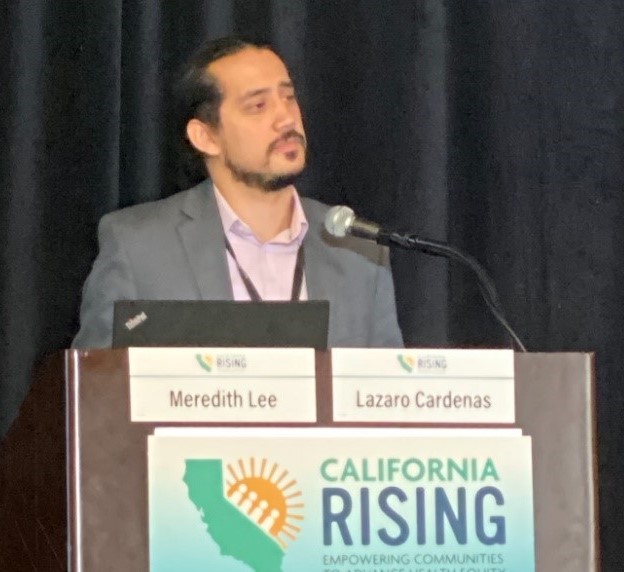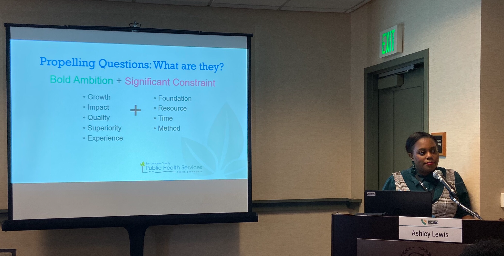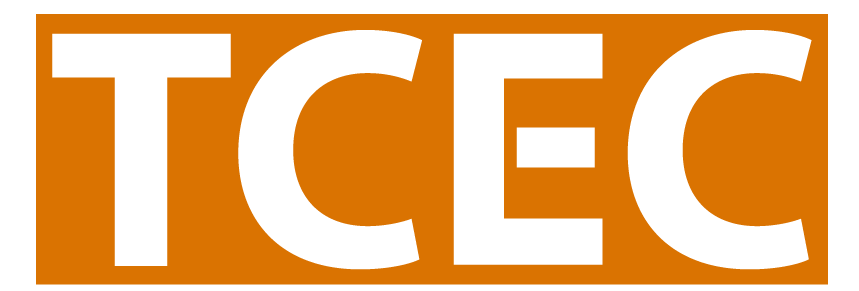
The Road to Health Equity: A Perspective on the 2019 California Rising Conference.
by Jorge Andrews
On November 13 and 14, California tobacco control professionals gathered in Sacramento for the California Rising: Empowering Communities to Advance Health Equity conference. We have made great strides in our public health work; California holds the lowest smoking prevalence rate in the nation. However, we have further to go toward bridging the gap in disparities of who smokes, who is targeted by tobacco advertising, and where tobacco products are most accessible. California is rising. Through our work as tobacco control advocates, we can empower even more communities.
California Rising Pre-Conference Webinar: Rod Lew, Executive Director of APPEAL
The tone of the conference was set even before the first person arrived at the conference site. In a pre-conference webinar, Rod Lew, Executive Director of APPEAL (Asian Pacific Partners for Empowerment, Advocacy and Leadership) spoke about how past work fails to understand the cultural context in which public health work was done. Rod mentioned that the “cookie cutter” attempts at change ultimately failed because they ignore the not-so-distant history: slavery, injustice, discrimination, racism. In order to win the final fight against tobacco interests, we all need to work together to include local wisdom in our work, and empower communities to advocate for themselves. With an evaluation focus, Rod explained that lack of disaggregated data masks hidden health issues of Pacific Islander communities because they are often combined with Asian communities. Data disaggregation is an equity issue, one that we all have the opportunity to address by collecting more granular demographic data like ethnicity.
Advancing Racial and Health Equity in Public Health: Meredith Lee and Lazaro Cardenas from California Department of Public Health

We have known that the tobacco industry disproportionately targets people of color, people of low income, and the LGBTQ+ community to name a few, but this is not the full story. The conditions which made the targeting of these communities easier were created by a history of segregation and inequity set forth by government-backed regulations on housing, also known as redlining.
Redlining is institutionalized racism by another name. Redlining was in practice until the Fair Housing Act of 1968, but its effects are still felt today. Redlining contributed to the wealth gap. At a time when most families grew their wealth from home ownership, minority populations were deprived of this right as the result of government policy. This policy perpetuated poverty for non-white people. Fast forward fifty years, and these conditions along with tobacco industry targeting are root causes of the health inequities we face today.
It is critical that we acknowledge our fight against tobacco and for ending health inequities in California is set against the backdrop of institutional discrimination and inequity. While this will be a huge challenge to overcome, we have made progress, and we continue to fight to make California a more equitable place. One way to address this is to include some of these issues in our data collection instruments and methods. Be sensitive to the way data is collected and used. We must not simply go into a community to take data and leave. Data provides and opportunity to engage our communities through the evaluation life cycle, including sharing results with the community from which the data were sourced. This reciprocity must be a routine practice in our evaluation work, because that data belongs to the community.

Breaking the Path to Dependence: Ashley Lewis from San Joaquin County
Being part of public health efforts comes with having to follow federal, state, regional, and local rules. These rules can often be perceived as constraints. In this session, Ashley Lewis from San Joaquin County Smoking & Tobacco Outreach and Prevention Program (STOPP) shared some knowledge she acquired through the Leadership & Sustainability School Fellowship, hosted by the Office on Smoking and Health at the Center for Disease Control and Prevention.
Ashley shared with us that constraints can be broken down into 4 different types:
- Foundational – prerequisites needed to achieve goal
- Resource – the available money, staff, etc. at your disposal
- Time – the ever-looming deadline
- Method – the process that needs to be followed to complete the work
Ashley calls these “beautiful constraints” we all face and suggests a paradigm shift: ask questions structured as “bold ambition & significant constraint.” The example she provided was from the 24 Hours of Le Mans sports car race. Automotive company Audi had the bold ambition of winning Le Mans and was facing the constraint of following race rules, which prohibited making the car run any faster or being more aerodynamic than the competition. The solution that Audi came up with was to make the car more fuel-efficient. With fewer refueling stops, their cars could win the race.
We face many constraints in our work, and we can choose to let them crush us into inaction, or we can shift our thinking and face these challenges with bold ambition. One example of this is currently happening with the Healthy Stores for a Healthy Community public opinion polls underway. Local Lead Agencies are required to ask additional demographic questions, which made the survey much longer than what it had been in the past. Many projects took this challenge head on and devoted extra time to training data collectors and developing resources to help respondents understand the definitions and purpose of the questions. It's sparked discussion and collaboration with other organizations about why and how to collect the additional demographic data. Instead of letting these constraints stop us, projects chose to use this as an opportunity to educate themselves and others.
Strategies for Addressing Geographical Challenges: Jay McCrubbrey, Addison Saenz, Selena Meade, Amanda  Berryhill
Berryhill
With 163,696 square miles, California is the 3rd largest state by landmass in the USA. Within its borders are diverse counties, both in populations and geography. In this session, 3 counties shared their stories and strategies to gain traction in geographically challenging parts of the state: the North Coast, Siskiyou County, and San Bernardino County.
The North Coast counties of California include Del Norte, Humboldt, Mendocino, Sonoma and Marin Counties. This area is home to miles of beautiful hiking, mountain biking, redwoods, and amazing outdoor possibilities-- as well as hours of winding roads separating towns and cities. To meet this challenge, Jay McCubbrey suggests building relationships by scheduling as many in-person meeting as possible. This part of the state has the additional challenge of a population wary of government. (Ever heard of the State of Jefferson?) To overcome this apprehension toward tobacco control, Jay takes the initiative to build relationships, even going as far as converting his travel van into a functional living and working space!
Siskiyou County is the northernmost county up Interstate 5 in California. This is where Amanda Berryhill works, and it’s a place where she has built youth coalitions and gained traction in her tobacco control work. While the region shares some of the same apprehensions about government involvement as the North Coast, Amanda was able to rack up wins with help of youth coalitions. In the area of Scott Valley, Siskiyou County Tobacco Education Project found an ally and champion in local school officials who organized an annual youth Mushball tournament, and in 2019 made the event tobacco-free! (Mushball is similar to softball, but is played with a bigger, mushier ball.)
San Bernardino County has the largest land area of any county in the USA. The county is made up of high desert and low desert regions, separated by a narrow canyon known as El Cajon Pass. Although this is a short distance, the two regions might as well be a world away. Culturally, the San Bernardino high desert is very different from the lowlands. To overcome this challenge, Selena Meade and Addison Saenz built relationships to engage individuals and build a single voice against the tobacco industry. In the case of high desert communities, these relationships took the shape of the youth coalition. The youth coalition learned of the disparities in smoking rates and the prevalence of products in their communities. It was this knowledge that motivated them to act. During an election year, the coalition mobilized and appeared at as many public events as possible, asking officials about their stances on tobacco availability, and even carrying voter registration forms. These efforts led to a larger awareness by the community of the impact of tobacco and prompted officials into action.
California is an amazing place, with a population as diverse as our geography. To have true equity we must all be able to thrive, so let us continue being bold, persistent, and undeterred by constraints in our evaluation and tobacco control work. California tobacco control advocates are creative, determined, and passionate individuals who fight every day to empower their communities, and that is why I believe that we will be able to eliminate tobacco in California by 2035.
